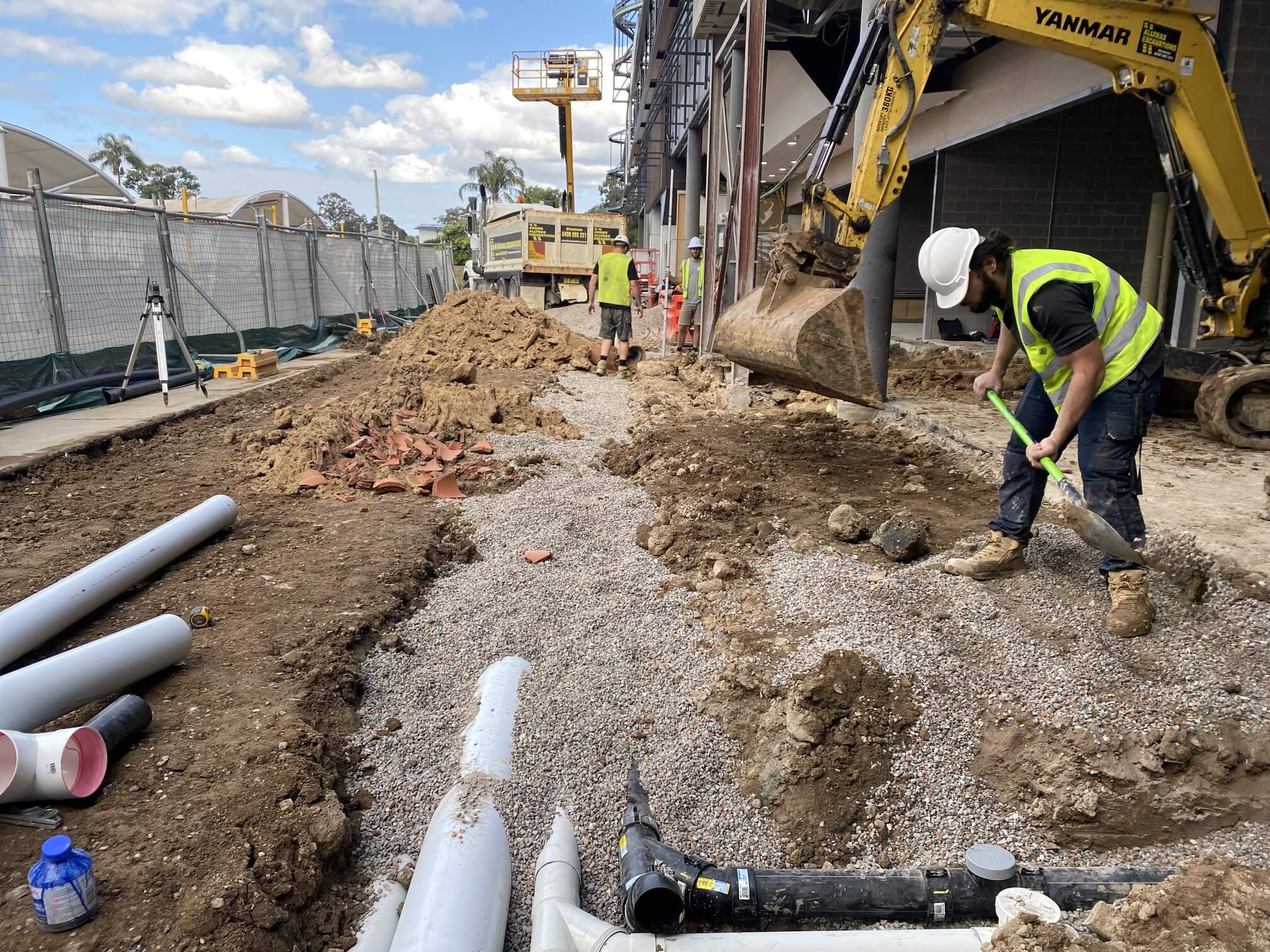With 30 years of experience working on commercial projects, we’ve got a bank of knowledge on the dos and don’ts when it comes to construction site safety. Ensuring projects run as hassle-free as possible is our objective – that means making sure processes are effective and that we increase safety for all people on site. At the end of the day, we want all of our staff to get home to their families safely!
Here are 10 techniques we use at Bear Plumbing to ensure safety on construction sites for our projects.
Make safety inherent in everything you do
As an absolute minimum, all tradespeople must adhere to local health and safety guidelines for their industries. Everything you do above that contributes to better health and safety outcomes on site.
At Bear Plumbing, we’ve set an expectation with all of our staff members that – not to be cliche – safety comes first. Our staff are our core assets, which is why we are dedicated to protecting their safety with support and performance reviews identifying opportunities for improvement.
Regular training and employment development
Consider setting up an employee training initiative and work through your staff’s goals and areas for improvement. Not only does ongoing support empower staff to be safer on-site, but it also increases an individual’s job satisfaction. Also, if you show your employees you want to add value to their career, they will be more likely to stay with your company long-term – feeding that experience back into your projects year after year!
Make your team accountable
Following on from regular training, set the expectation that staff need to take responsibility for any issues that happen on site. Safety-related processes must be clearly explained and all employees need to understand their role in ensuring these processes are implemented. If required, set some consequences and KPIs to keep your team on track – even a celebratory shared lunch after an incident-free project can reinforce good habits.
Keep track of incidents and identify how to avoid them in future
With any incident – even if no one was hurt – it’s important to record and reflect, ensuring mistakes are avoided in the future. After all, learning from mistakes is how we grow! Come up with a process that works for your business to debrief and improve processes following any incident or near-miss.
Get buy-in from the team
If part of your problem is that staff simply aren’t engaged with your safety protocols, consider what the pain points in your system are. Do steps get missed because they hold up production? Or perhaps your staff don’t feel heard when they bring safety issues to light? Once you work out why these things occur, make changes to your protocols and culture that encourage buy-in from your team.
Set up clear communication guidelines
Make sure your client culture is set up to encourage feedback from your staff. If staff feel heard, they will be more likely to discuss any on-site issues with their managers. Ensure your team members know who to talk to with any concerns about safety on-site – and make time for these concerns to be discussed. This will encourage a culture of respectful communication and critical information sharing and in turn create more successful outcomes.
Use the right tools and equipment for the job
This is the fun part – your excuse to go tool shopping! But in all seriousness, this point is hugely important and pretty simple – protect your staff with properly maintained tools and you will improve safety on-site. Check off training with new-starters in your team to make sure they understand how to use their tools safely. And, utilise the ever-improving technology that is adding to work-safe efficiencies in all sorts of different applications.
Protect your staff with highly-effective PPE
Too often we see businesses supplying adequate protective equipment that falls short of best practice, even if it meets industry standards. Your staff will take safety more seriously if you prove it’s importance by supplying PPE they can trust. Yes, this might be more expensive upfront – but wouldn’t you prefer to pay a little extra for superior PPE than have a major avoidable accident on-site?
Hire the right staff
This might seem harsh – especially if they’ve been with you long term, but if your employees don’t buy into your health and safety processes, it might be time to let them go. Any staff members that aren’t meeting your standards of safety become a liability VERY quickly. Set expectations for new staff very clearly and ask the right questions of their references. Do they follow instructions diligently? Have they been involved in any incidents and if so, how did they improve their practices afterwards?
Never stop improving your safety protocols
If you’ve got number 1-9 down, we’re sorry – but your work is not finished! Over time there will always be more opportunities to improve, set up review processes, refine safety practices and utilise new technology to increase construction site safety. Set up Google alerts, subscribe to industry-relevant safety information and government guidelines to stay informed and protect your staff no matter what the project is.
Accidents aren’t just a health and safety issue, they also affect the project timeline and effectively, the profitability of a job. Set your staff up with the tools they need to improve construction site safety and you will reap the benefits through fewer incidents, happier and more fulfilled staff – plus fewer interruptions to the project timeline.
Want to partner with a commercial plumbing provider that keeps site safety inherent to all processes? Give us a call – we’ll handle it!

